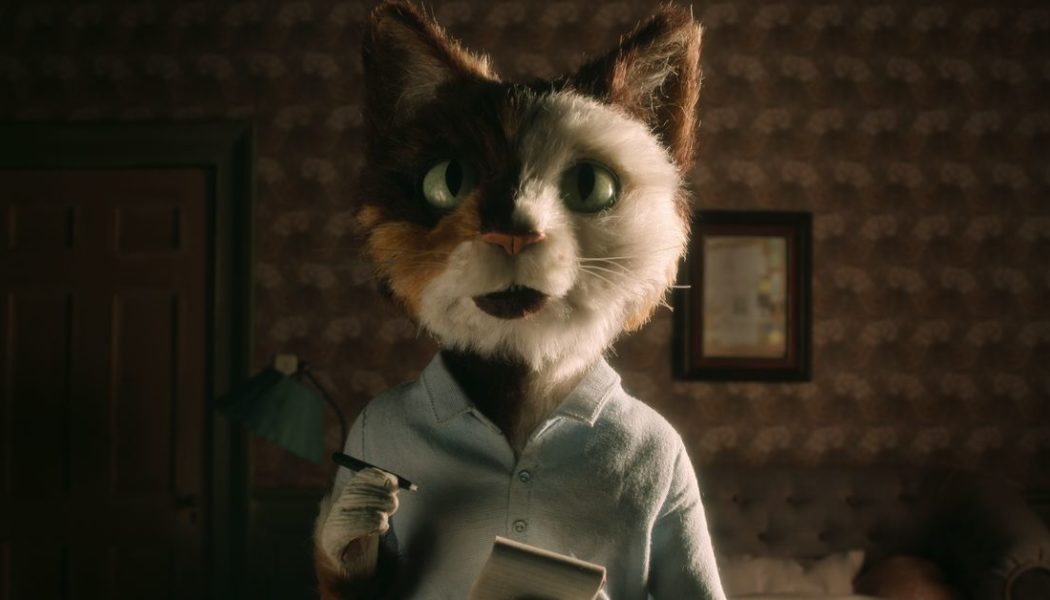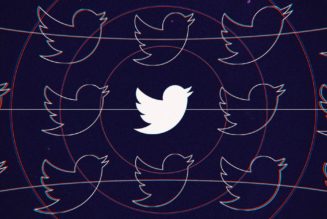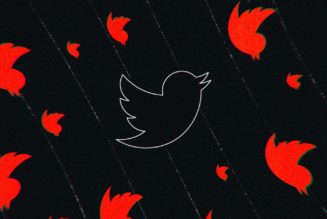
The House, one of Netflix’s first new releases of the year, is a straightforward concept. It’s a film split into three chapters, each helmed by a different director, all of which explore a different story related to the same sprawling home. What connects each short, aside from the physical house and stop-motion animation, is a creeping sense of dread. The House looks cute, with talking animals and dollhouse-like visuals, but in each story there’s something lurking just beneath the surface; something wrong, unsettling. It could be a recession or a scary creature — but when you put it together the result is an anthology with a trio of distinct, yet clearly connected stories.
The first chapter, directed by Marc James Roels and Emma de Swaef, is an origin story of sorts, which opens with the ominous phrase, “and heard within, a lie is spun.” It’s a story about envy: when visiting relatives mock a young family’s home, the father makes a drunken arrangement with an eccentric architect offering to build them the house of their dreams free of charge. Initially, it’s an almost idyllic scenario; not only is the house huge and beautiful, but food appears as if from nowhere and the lights turn themselves on. But slowly things unravel. One day stairs go missing as the architect decides to rearrange his masterpiece, while zombie-like workers lurk around in silence. Later the architect gifts the parents bizarre clothing to match the decor. It’s hard to tell whether something supernatural is going on or if it’s just a cruel psychological experiment, and it’s all rendered in soft felt that only adds to the surreality.
Later stories move the timeline forward. Chapter two, directed by Niki Lindroth von Bahr, is set in modern times, when a struggling contractor — who is also a mouse — is renovating the house in an attempt to make some big money. Unfortunately, everything seems to go wrong; not only is he investing everything in the project in the midst of a recession, but he has to deal with persistent problems like a mysterious bug infestation. When the house is complete, only one couple bites: and there is something clearly wrong with them. I won’t spoil anything, but this one is worth watching for the final twist alone. The last chapter, helmed by Paloma Baeza, pushes things further into the future when the house is surrounded by a flooded city. However, a young cat, who has converted the home into apartments, refuses to cave to reality and literally tries to wallpaper over her problems while her remaining tenants do what they can to help her move on.
[embedded content]
Despite the various circumstances and timelines, in each story the house represents a kind of lifeline for the characters. It’s a chance for a family to inspire jealousy, for a mouse to pull himself out of the crushing weight of debt, and for a cat to slowly build the home of her dreams. The house seems to attract the desperate. What’s most interesting about The House is how each story offers a different riff on this theme. The first two chapters lean into being creepy, particularly their unsettling endings, but while the first is more of a slow-building dread, the second is much more tangible. Meanwhile, the final chapter, despite starting out quite bleak, ends on a surprisingly hopeful note.
The House also features some of the best-looking stop-motion animation you’ll see outside of a Laika film. Each story has a different vibe. The felt characters of chapter one lend it an almost cozy vibe, that makes the darker elements even more stark, while the second chapter is incredibly lifelike and detailed, right down to the little piece of tape covering the webcam on the contractor’s laptop. The final story, meanwhile, is more ethereal, with foggy backdrops that signal something approaching the end of the world. The only constant is the house, which is always recognizable despite superficial changes over the years.
It’s an almost ideal anthology: connected and yet standalone. And, at around 30 minutes each, the chapters are short enough that they don’t overstay their welcome, while also being strange enough to stick with you.
The House streams on Netflix starting January 14th.









